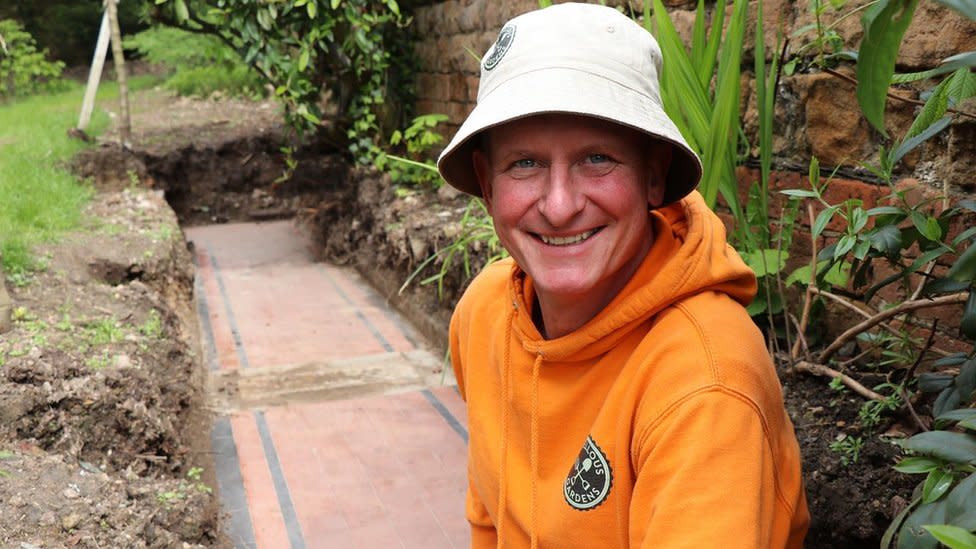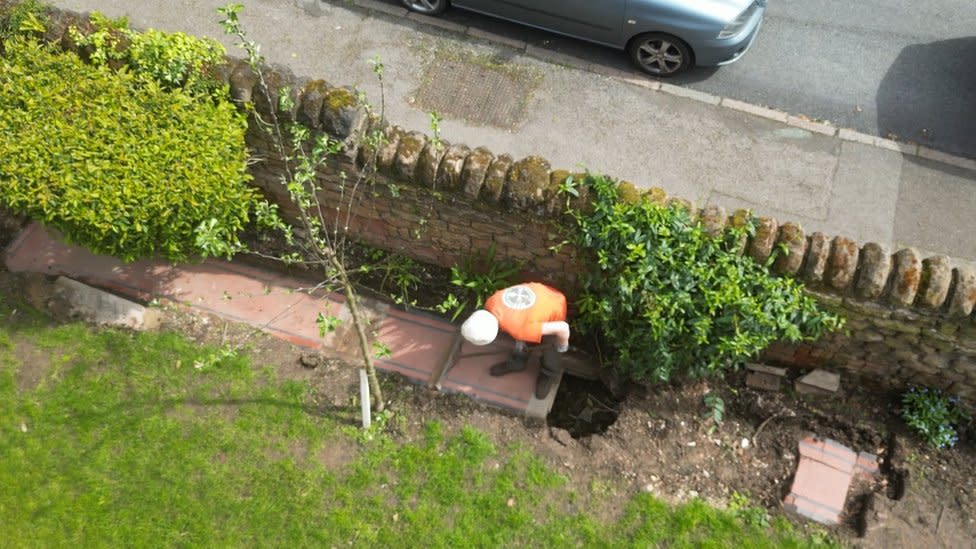Nottingham's lost history unearthed during garden work

Remains of some of Nottingham's lost Victorian past has been unearthed by accident during gardening work.
Martin Marshall was aiming to plant trees next to flats in Elm Close, off Mapperley Road, but found a near-pristine red tiled path.
A short video about the find posted on social media has now been viewed more than 12 million times.
Research has linked the path to one of the large properties owned by prestigious Victorians in the 1880s.

Mr Marshall, who runs his own landscaping and gardening business, said they planned to plant three fruit trees.
"We had just got started when we hit something solid and clearly big," he said.
"We uncovered shiny red tiles and started to follow them and it turned into a path.
"It was clear we couldn't plant the trees here because we certainly weren't going to destroy the path, so we moved the trees and covered the path up."
Shortly after the discover, Mr Marshall posted a series of pictures on Instagram.
"It went crazy," he said. "I think it has had 12.6m views.
"It's phenomenal, it has gone around the world.
"This is by far the most interesting thing we have found, normally it is a few bottles or just junk."
Homes demolished
Nottingham historian Lucy Brouwer, who leads walks linked to local architect Watson Fothergill, said the area attracted some of the Victorian era's most prominent citizens.
"The whole area was open ground until bought by a man called Edwin Patchitt - twice mayor of Nottingham - who started selling it off in the 1850s," she said.
"It was then sold off for various large houses, including that of Fothergill in 1871.
"This site is further along and is marked as The Elms on a map of 1875.
"But it seems there were lots of places called Elms in Victorian times so it's not yet clear who was the owner but it could have been a prominent solicitor, William Acton.
"This house seems to have had outbuildings so the pavement could have been part of a greenhouse or similar, which were popular at the time."
Several of the 'villas' eventually fell into disrepair, including the Fothergill house, and were demolished in the 1960s, with flats built in their place.
The pavement is currently uncovered and may become a permanent feature of the current gardens.
Follow BBC Nottingham on Facebook, on X, or on Instagram. Send your story ideas to eastmidsnews@bbc.co.uk or via WhatsApp on 0808 100 2210.
